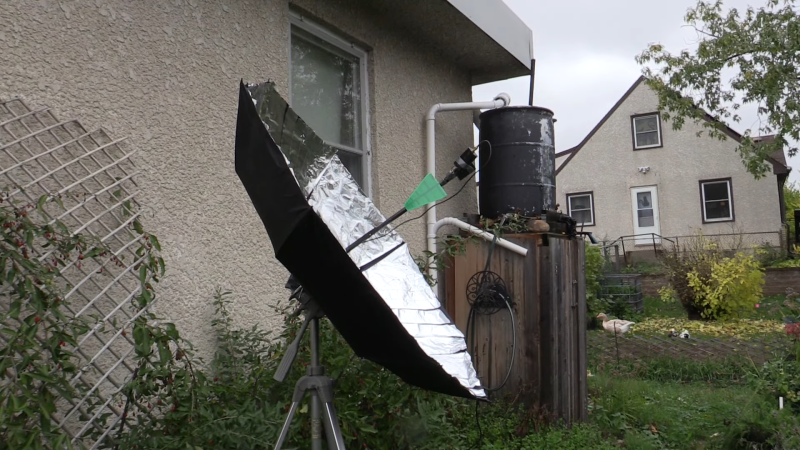You never know when you’ll be called upon to [MacGyver] your way out of an emergency. We can’t imagine what kind of situation would call for whipping up a satellite ground station for NOAA weather satellites from junk, but hey, it could happen.
And when it does, you’ll be ready — as long as you have an umbrella, some foil tape, and various bits and bobs like wire and an RTL-SDR dongle. That’s what [saveitforparts] used for his field-expedient build, at least in the first instance; as you can imagine, builds like this take a lot of tweaking to get right. The umbrella and foil tape form the main reflector for the antenna, with a pie tin, a scrap of wire, and some random twigs being used to build the antenna’s helical feed. Attached to a SAWbird LNA/filter and an RTL-SDR plugged into a dodgy second-hand phone, he was able to get at least some kind of data from one of the GOES satellites, but it wasn’t great.
Switching the feed to a commercially available log periodic antenna worked much better, with some partial decodes of weather map data. Actually, getting anything at all with a setup like this is impressive enough for us to call it a win. It shows that the umbrella approach to antennas is valid; but then again, we already knew that.

















Also features Fluff. So, bonus.
Wasn’t that in a James Bond movie? Extra kudos, but take care not to call the lightning.
ET phone home
Very cool! Gabe is amazing, doing all the satellite radio stuff with a simple gear! I wish that someday I can get a picture from a weather satellite.
I wonder how many dB of RF power the umbrella antenna gets, compared to an ideal antenna of the same diameter.
N7IJS.
I wonder if you could remake the little joints that connect the ribs to make them form a more parabolic shape in the end
Remember that a prime focus dish antenna generally only achieves around 50 to 60% aperture efficiency at best due to the difficulty of controlling the feed illumination at the edges.
Also RMS errors in shape of less than a 1/10 of a wavelength has minimum effect on efficiency. Larger errors progressively nearer the outer edge will be less important on forward gain.
Shape errors will however increase sidelobe levels.
To make up for some inefficiency just use a larger brolly!
Great innovation. I like it! I might try and make one myself.